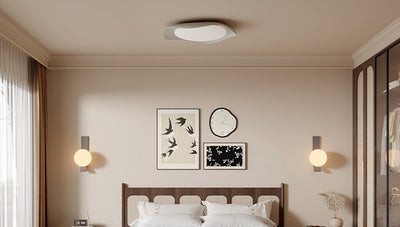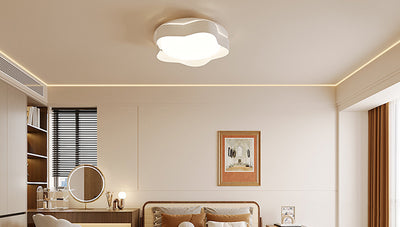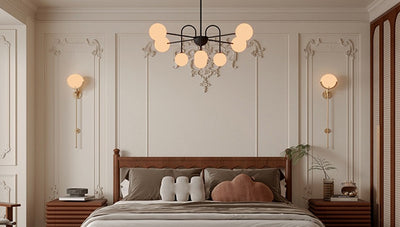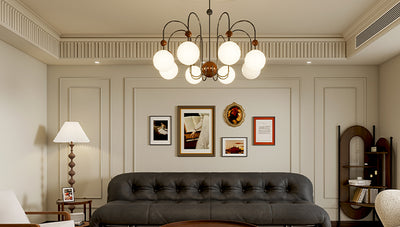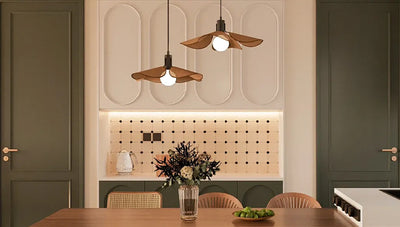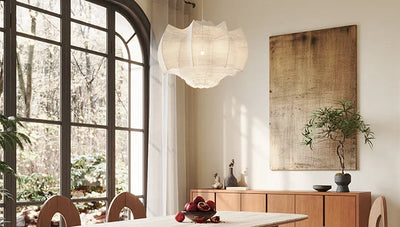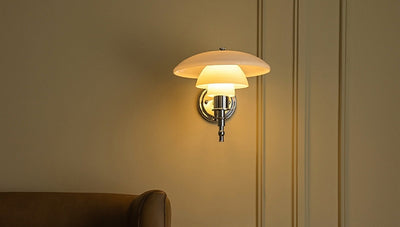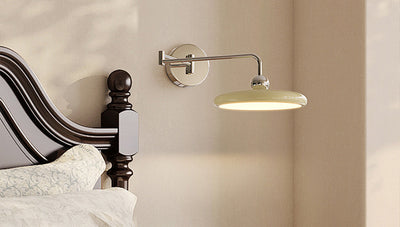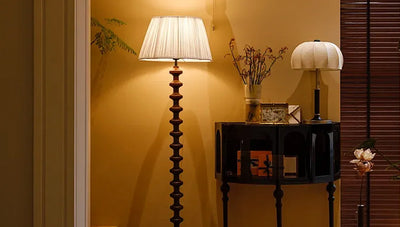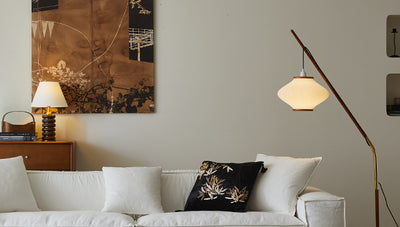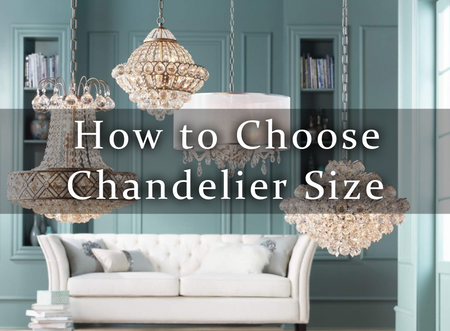
'Where to put floor lamp in living room?' That question hits the sweet spot between design and practicality, and it’s one nearly every home decorator stumbles over. A lamp’s too tall here, too dim there, and somehow always ends up in the one spot where you trip over the cord.
In this guide, you’ll get the lowdown on lamp locations that just work—from behind the couch to brightening up that awkward corner. Short, sharp tips. No fluff. Just lighting made easy.
Where Should a Floor Lamp Go for Reading?
A floor lamp can make or break your reading zone. Here’s how to place it right for comfort and style.
Best Lamp Placement for Armchair Reading
For the ultimate reading comfort, place your reading lamp slightly behind or beside your armchair, about 15–36 inches above shoulder level.
- ✅ Prevents eye strain and glare
- ✅ Enhances task lighting without overpowering ambient lighting
- ✅ Works best with adjustable lamp height and directional lamp shade
A quick rule of thumb? The light should fall over your shoulder and directly onto the book — not into your eyes!
How Height Affects Reading Comfort
Height isn’t just a detail — it’s a game changer in reading comfort:
- Too low? You’re leaning in, causing neck pain.
- Too high? Harsh light direction and shadows disrupt focus.
- Just right? The lamp height aligns with your eye level and supports good posture.
Experts recommend lamp tops be 58–64 inches from the floor for most ergonomic setups.
“Proper lighting supports both posture and prolonged reading. It’s more than ambiance — it’s about wellness.” — Marie LeClair, Interior Lighting Consultant

Soft vs. Bright Light for Reading
Soft light? Great for chilling. Bright light? Better for focus. It’s all about color temperature and light intensity.
- Soft Light (2700K–3000K) gives you a warm, cozy glow but might not cut it for fine print.
- Bright Light (3500K–5000K) offers better clarity but can cause eye strain if it’s too harsh or poorly angled.
Quick Tip: Pick a reading lamp with adjustable lumens and use a lamp shade to diffuse. Trust us, your eyes will feel the difference.
👉 Bonus tip: Use a lamp shade that diffuses light evenly and reduces glare!
Best Floor Lamp Positions
Where you put a floor lamp totally changes your vibe. Let’s dig into the best spots for both form and function.
Lamp in the Corner of the Room
Corner lamps are perfect for adding ambient lighting without dominating the space. They shine best when paired with pleated shades or silk shades, which diffuse light softly. Be mindful of dust accumulation—fabric shades need regular cleaning. 💡 Tip: Choose a slim profile to blend with corner décor. Bonus points if it complements your room décor color palette.
Near Entryways or Door Frames
Want a bold first impression? A floor lamp by the entryway sets the tone. Go with a tall doorway lamp that fits your foyer décor.
- Use vacuum attachments for regular cleaning.
- Choose a neutral shade material to avoid clashing with wall art or mirrors.
- Match lamp size with hallway width so it doesn’t feel cramped.
Next to the Sofa or Side Table
Placing a lamp here isn’t just about style—it’s all about task lighting and convenience.
- Pick a height that lines up with your side table or sofa arm.
- Go for reading lamps with adjustable necks.
- Match lamp base style to your living room décor. Also, don’t forget fabric care—stain removal and cleaning frequency matter if you’re brushing up against upholstery daily.
Beside the TV Setup
This is a surprisingly strategic spot. The right TV lamp helps cut down on screen glare while creating cozy media room lighting. Try this quick breakdown:
| Shade Color | Glare Reduction | Ideal Use |
|---|---|---|
| Warm Beige | High | Movie nights |
| White | Medium | Daytime watching |
| Gray | Low | Accent décor |
And hey, dimmable options are a game-changer. Use light diffusion to keep things easy on the eyes.

Is a Floor Lamp Good for Large Living Rooms?
When designing lighting for large living rooms, the humble floor lamp often becomes a surprisingly powerful tool. According to interior lighting designer Ellen Trask, “In expansive spaces, what makes or breaks the room is not just light, but how it’s layered.”
Large living rooms—with their vast dimensions, tall ceilings, and sprawling furniture placements—require more than just overhead lighting. They need balance, depth, and flexibility. Floor lamps deliver that with ease. These fixtures provide ambient lighting, fill shadowy corners, and work as both task lighting for reading zones and accent lighting near feature walls or art.
🛠️ Important placement cues for large rooms
- Consider ceiling height: Taller lamps (65–72 inches) blend better
- Match lamp size to furniture scale
- Use brightness control for layered lighting flexibility
- Opt for warm tones to soften echo-prone spaces
Brands like Wowoh and FLOS offer award-winning designs known for both aesthetics and adjustable light intensity. Some models even include certification for energy efficiency, giving peace of mind and long-term savings.
Floor Lamp Behind or Beside Furniture?
Struggling with lamp placement near furniture? This guide helps you decide where a floor lamp belongs—behind the sofa or beside the desk—based on function and vibe.
Pros of Lamps Behind Sofas
Putting a floor lamp behind your sofa or couch can instantly level up the vibe. It’s not just about lighting—it’s about creating mood. A well-placed lamp behind the sofa offers:
- Ambient lighting without harsh glare
- Space-saving, especially in tight living rooms
- A cozy reading light if angled right
- Enhanced accent lighting when paired with the right shade type
Bonus Tip: Indirect lighting from behind the sofa works best with soft white bulbs and a tall lamp size that clears the top of your couch.

When to Place Lamps Beside Desks
Sometimes, the only thing between you and a headache is better lighting.
- If your desk size is compact and crowded, a floor lamp next to it frees up surface space.
- Use an adjustable lamp with a focused beam for better task lighting and less eye strain.
- Great for home offices or late-night grind sessions in your study area—especially when paired with a lampshade that softens glare.
As interior designer Jenna Lowe puts it,
"The right desk lighting doesn’t just illuminate your work—it lifts your mood, too."

Think of your floor lamp like a supporting actor—it shouldn’t steal the show, but when it’s in the right spot, the whole scene just works. Got a reading chair? Tuck it beside. Empty corner? Boom, instant glow-up. Big space? Aim for balance, not clutter.
As interior designer Nate Berkus once said, "Lighting is everything. It creates mood and atmosphere." And he’s not wrong. Bad lighting makes good rooms feel blah.
So before you buy, walk your space, take note of where life actually happens—and place your lamp where it can shine with you.

